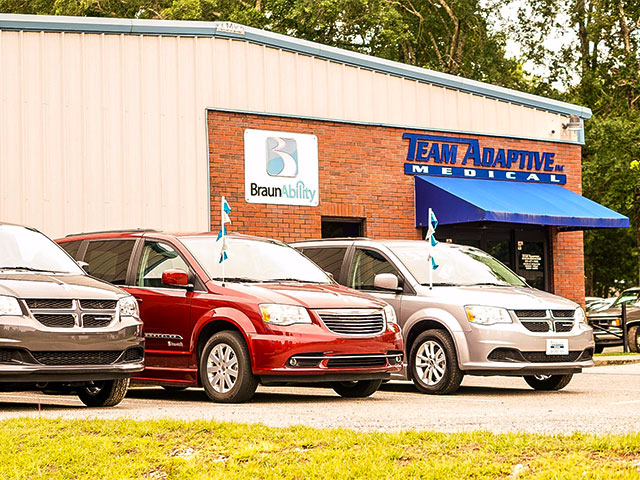
7 Best Drilling Mud Pumps: Performance Stats You Need to Know for Optimal Efficiency
In the drilling industry, the efficiency and performance of drilling operations heavily rely on the quality of the equipment utilized, particularly Drilling Mud Pumps. According to a report by the International Association of Drilling Contractors (IADC), the choice of mud pump can influence overall drilling performance by as much as 20%.
With advancements in technology, modern Drilling Mud Pumps are engineered to handle higher pressures and flow rates, enhancing the effectiveness of the drilling process.
As per recent industry analyses, the global drilling mud pump market is projected to reach USD 1.8 billion by 2025, reflecting an increasing demand for these essential tools in both onshore and offshore drilling activities. Therefore, understanding the technical specifications and performance metrics of the top Drilling Mud Pumps available on the market is crucial for drilling contractors aiming for optimal efficiency and productivity in their operations.
Top 7 Drilling Mud Pumps for Maximum Efficiency in 2023
When it comes to drilling operations, selecting the right mud pump can significantly impact overall efficiency. In 2023, several standout models have emerged as the best options for maximizing performance. These pumps are designed to handle the unique demands of drilling fluids, ensuring optimal circulation and maintaining wellbore stability. High efficiency, durability, and versatility are key characteristics that define the top contenders this year.
Among the leading drilling mud pumps, features such as horsepower, flow rate, and pressure capabilities are essential performance stats to consider. Pumps that can deliver consistent high pressure while effectively managing various types of drilling mud are crucial for operational success. Additionally, advancements in technology have led to improved designs that enhance reliability and reduce maintenance costs, making this year's choices not only efficient but also cost-effective. By focusing on these models, operators can ensure they are equipped with the best tools to tackle the challenges of drilling in diverse environments.
Key Performance Metrics: Flow Rate and Pressure for Optimal Pump Selection
When selecting a drilling mud pump, understanding key performance metrics like flow rate and pressure is crucial for optimal efficiency. The flow rate, typically measured in gallons per minute (GPM), indicates how much fluid the pump can deliver. For effective drilling operations, the pump must match the specific flow rate requirements of your drilling fluid, which varies based on well depth and size. High flow rates can enhance the transport of drilling mud, ensuring that cuttings are efficiently removed from the wellbore.
Pressure is another vital metric to consider, as it affects the pump's ability to overcome the resistance of the fluid being pumped. A higher pressure rating enables the pump to handle denser muds or deeper well applications. In harsh drilling conditions, adequate pressure ensures the hydraulic system operates smoothly, preventing losses in horsepower and enhancing overall performance.
**Tips:** Always consult the manufacturer’s specifications for both flow and pressure to ensure compatibility with your drilling project. Regularly monitoring these metrics during operations can also help identify performance issues early, minimizing downtime. Additionally, when in doubt, consider reaching out to a pump specialist for personalized advice based on your specific drilling needs.
Comparative Analysis: Best Brands and Their Unique Features
When it comes to drilling mud pumps, the selection of brands can significantly impact efficiency and performance. Leading industry reports, such as the "2023 Global Pump Market Analysis", highlight top manufacturers like DAB Pumps, Grundfos, and Gorman-Rupp.
DAB Pumps offers advanced hydraulic efficiencies through their innovative design, achieving up to 85% efficiency in mud retention, crucial for enhancing drilling fluid circulation. In contrast, Grundfos is well-known for its versatile range, including submersible pumps that provide performance stability across various pressures, boasting a maximum flow rate of 5000 L/min.
Furthermore, Gorman-Rupp's reputation is grounded in its heavy-duty pumps designed for rugged conditions. Their models often feature self-priming capabilities and operate effectively with abrasive fluids, which is particularly beneficial in drilling operations. Reports indicate that Gorman-Rupp pumps can endure solid concentrations exceeding 5% without significant wear, highlighting their durability. Each brand offers unique features tailored to specific drilling needs, making comparative analysis essential for optimizing operational efficiency and ensuring the right pump is chosen for specific tasks.
Maintenance Tips to Enhance the Longevity of Drilling Mud Pumps
To enhance the longevity of drilling mud pumps, regular maintenance is crucial. This includes routine inspections to identify and address any wear and tear before it escalates into a major issue. Checking seals, bearings, and connections for signs of damage can prevent costly downtime and prolong the pump's life. Additionally, keeping the pump clean from debris and sediment is essential, as it allows for smoother operation and reduces the risk of blockages that could lead to breakdowns.
Moreover, proper lubrication is vital in maintaining optimal performance. Using the correct type of lubricant and ensuring that all moving parts are adequately greased can minimize friction and wear, consequently extending the pump's operational lifespan. Operators should also keep a close eye on fluid levels and the quality of the drilling mud, as contaminants can negatively impact pumping efficiency and cause premature damage. By adhering to these maintenance tips, users can ensure that their drilling mud pumps operate effectively and reliably for extended periods.
7 Best Drilling Mud Pumps: Performance Stats You Need to Know for Optimal Efficiency
| Pump Type | Flow Rate (GPM) | Max Pressure (PSI) | Power (HP) | Weight (lbs) | Maintenance Frequency (months) |
|---|---|---|---|---|---|
| Hydraulic Mud Pump | 150 | 2500 | 30 | 400 | 6 |
| Gear Pump | 120 | 2000 | 25 | 350 | 12 |
| Diaphragm Pump | 100 | 1800 | 20 | 250 | 8 |
| Electrical Centrifugal Pump | 200 | 2200 | 40 | 500 | 10 |
| Progressive Cavity Pump | 80 | 1500 | 15 | 300 | 9 |
| Submersible Pump | 140 | 2000 | 32 | 450 | 7 |
| Rotary Pump | 130 | 2100 | 28 | 380 | 11 |
Cost-Effectiveness: Evaluating Pump Performance Against Investment
When considering drilling mud pumps, cost-effectiveness plays a critical role in decision-making. Evaluating pump performance against investment involves analyzing not just the initial purchase price but also long-term operational costs, maintenance requirements, and overall efficiency. A high-performing pump that operates efficiently can lead to significant savings over time, reducing downtime and enhancing productivity on site.
To assess the cost-effectiveness, it's essential to look at the performance stats of each pump model. Factors such as flow rate, pressure capability, and durability should be scrutinized. For instance, a pump with higher efficiency may have a higher upfront cost but can outperform cheaper alternatives through reduced energy consumption and fewer repairs. Additionally, the ability to adapt to various drilling conditions can add to a pump's value. Therefore, investing in a quality drilling mud pump often translates into better financial outcomes, making thorough performance evaluation crucial for optimal investment decisions.
7 Best Drilling Mud Pumps: Performance Stats for Optimal Efficiency
This bar chart represents the cost-effectiveness ratio of seven different drilling mud pumps. The ratio indicates the performance efficiency relative to the investment cost, helping stakeholders to evaluate which pump offers the best value for operational efficiency.












